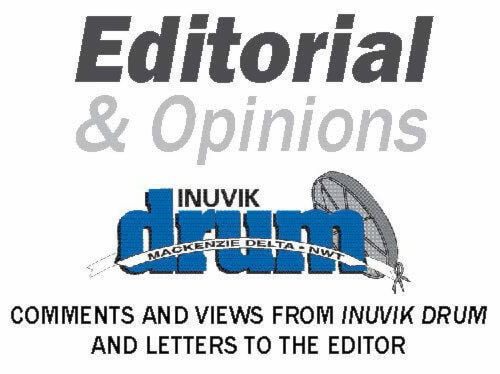In the 1980s, Orillia and London, Ont., were both considered ideal ‘test market’ communities for consumer goods.
Both had populations in the tens of thousands and were average, middle-class small cities outside out of the Greater Toronto Area. Some of us may even remember the ubiquitous commercials that told us four out of five dentists in Orillia recommended Crest for our fluoride needs. My hometown of Ottawa was even a test market for the first debit cards in Canada, two years before everywhere else.
Closer to home and earlier this year, Yellowknife boasted about landing a South Korean helicopter cold-weather testing contract, and Thompson, Man., has been slowly establishing itself as a Centre of Excellence for large-scale cold-weather engine development. These have been boons to local businesses and have created jobs and opportunities.
We wouldn’t want to replicate what those communities are doing up here in the Beaufort Delta – but we do have some unique attributes that may make us a very attractive sample community to an underserved commercial product cold weather testing market: Inuvik is the only town in Canada’s Arctic; we have a perfect sample-size population of around 3,500 in a catchment area of about 10,000. We have 400-600 households; we have an established research community; we have road access and will soon have an extended airport runway; and we have a wonderfully mixed-demographic population.
A great way to leverage commercial and industry knowledge of a municipality is to develop a unique service industry that puts the community on the map — an industry that establishes it as the go-to spot for a particular service of unmatched quality. Imagine products with an ‘Arctic certified’ or ‘Arctic-rated’ tag on store shelves in the future and know that they were tested right here at home – literally the only place in Canada where they could be tested to Arctic standards.
Commercial products can be items as simple as new glove or winter boot technology, solar-powered roof panels, municipal street lighting, improved siding for houses, camera equipment, battery life, toys – all the way to heavy-equipment, vehicles and machinery.
For example, with equipment testing, who better to test it than municipal workers and contractors? That could lead to an Inuvik Public Works department with access to some of the latest and greatest technology – costing the town (and taxpayers) nothing, all covered under warranty – and with training. At the conclusion of testing, a barter to leave the unit, or to provide one, two or three new ones for future use can be made.
At a community level, if we offered up our houses and buildings and tested new LED outdoor lights or solar roof panels, we could have a leave-behind that takes a burden off of municipal and territorial coffers, increases residential housing values and improves safety in our community. Testing something as simple as cold-weather clothing could be advantageous with a region-wide leave-behind of product, on top of the $5,000, $20,000 or $100,000 testing fee per SKU shared under a formal standards-based public-private partnership regime.
Inuvik isn’t Yellowknife or Thompson, nor should we be. We should however, be looking for outside-the-box ideas such as this to expand our tax base, provide job and training opportunities, and give our economy a bit of a kick.
-Tony Devlin is an Inuvik town councillor and business owner
